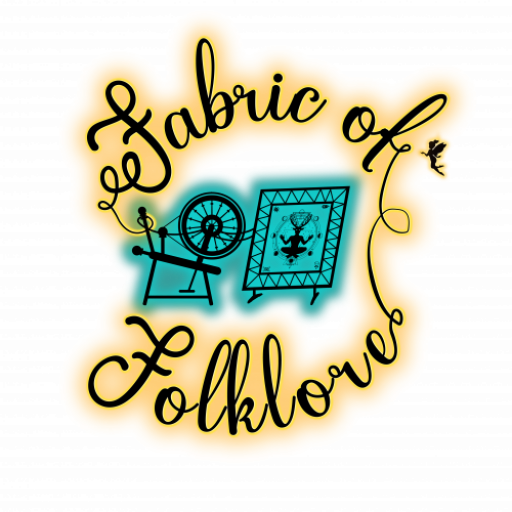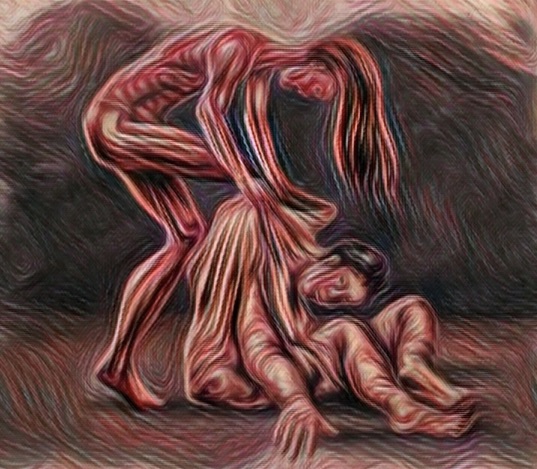One of the creepiest stories told by Southern Gothic podcaster Brandon Schexnayder during episode 28 was the Legend of the Boo Hag, originating from Gullah culture. It was also one of the most unique folklore stories I’ve ever heard. This eerie tale of an energy vampire, like many folklore stories, has evolved through the oral tellings. There are different versions of this creature who wears the skin of another across this unique region. In this article, we will explore the origins of the Boo Hag legend, the diverse versions it has taken on, and the intriguing theories about how this hair-raising story first came into existence.
“It’s often said that the Boo hag itself which is described as this creature that is like a skinless Gollum. It’s skinless, you can see it’s muscle, it’s gross muscle. And it’s got claws and beady eyes and you know maybe little Tufts of hair sticking out. Just a slimy hideous creature.” – Brandon Schexnayder (episode 28)
Origins of the Boo Hag
The Boo Hag legend is primarily rooted in African American folklore, particularly in the Gullah-Geechee communities along the coastal regions of the southeastern United States, including South Carolina and Georgia. The Gullah-Geechee people are descendants of enslaved Africans who retained many of their African traditions and beliefs, which significantly contributed to the development of the Boo Hag legend.
One possible origin of the Boo Hag can be traced back to West African folklore. In West African folklore, there is a creature known as the “Adze” or “Ade” in the Ewe culture of Ghana and Togo. The Adze is believed to be a vampire-like being that can take on a human form during the day but at night, it transforms into its true, supernatural self to suck the blood or life force of its victims. These shape-shifting creatures who avoid community gatherings, cooked food and salt, were said to prey on their victims as they slept. It is believed that enslaved Africans brought these stories with them to the Americas, where they merged with other cultural influences to create the Boo Hag legend.
Variations of the Boo Hag
The Boo Hag legend has taken on various forms and variations throughout the years, each with its unique characteristics and storytelling traditions. Here are some notable versions of the Boo Hag legend:
- Traditional Boo Hag: In this version, the Boo Hag is depicted as a malevolent spirit that peels off its skin at night, leaving it behind as it goes out to steal the breath and energy from unsuspecting victims. To protect themselves, people would often place brooms or straw near their beds, as the Boo Hag would become trapped if it tried to re-enter its skin through these objects. In the version told by Southern Gothic’s Brandon in episode 28, haint blue protects the houses from the Boo Hag.
- Mrs. Hag: In some versions, the Boo Hag takes on a more human-like appearance, often disguising itself as a neighbor or family member during the day. At night, it would remove its skin to feed on the sleeping victim’s essence. This version plays on the fear of betrayal from someone trusted.
“The thing about the boo hag is it has the ability to slip into a victim’s skin and wear someone else as a costume.” – Brandon Schexnayder
- Variations by Region: Different regions have their own unique interpretations of the Boo Hag legend. For instance, in the Lowcountry of South Carolina, the Boo Hag is believed to be a female vampire-like creature, while in the Sea Islands, it is often portrayed as a witch-like figure.
- Cross-Cultural Influences: Over time, the Boo Hag legend has intermingled with other cultural beliefs, resulting in hybrid versions. For example, some versions of the Boo Hag incorporate elements of European witchcraft and shape-shifting folklore.
Theories on the Origin of the Boo Hag Legend
While the exact origin of the Boo Hag legend remains a subject of debate, several theories shed light on its possible genesis:
- African Ancestry: As mentioned earlier, the Boo Hag legend likely originated from West African folklore brought to the Americas by enslaved Africans. The themes of spirit possession and life force extraction bear a resemblance to similar African legends.
- Supernatural Explanation: Some believe that the Boo Hag legend may have arisen as a way to explain sleep paralysis and the eerie sensation of being unable to move during the night. People experiencing sleep paralysis may have attributed their experiences to a malevolent spirit like the Boo Hag.
- Social Commentary: The Boo Hag legend may also serve as a metaphorical expression of the fear and anxiety faced by enslaved African Americans. It could symbolize the oppressive forces that drained their energy and life force.
“If you ever walk around downtown or just about anywhere in Charleston there’s two things you’ll notice that come from this (folklore story). If you look up on top of porches from the most meager homes all the way up, you’ll see it painted this kind of sky blue aqua blue color, it’s called haint blue and it’s supposed to help protect the people in the house from the spirit. But you also might have somebody might tell you before you go to bed, as a warning, ‘don’t let the hag ride you’. And that’s a kind of warning; make sure you get a good night’s sleep because if you wake up breathless it might be because the boo hag came into your home”
-Brandon Schexnayder (episode 28)
The legend of the Boo Hag is both a frightening piece of folklore, and a unique element of the incredible culture of the Gullah people. Folklore stories such as the Boo Hag are vital to the identity of a people. They serve the community by preserving cultural heritage, entertaining, educating, and connecting the fabric of a culture together.
What did you think of the Boo Hag creature? Does it remind you of another legend? What is your favorite creepy folktale?

